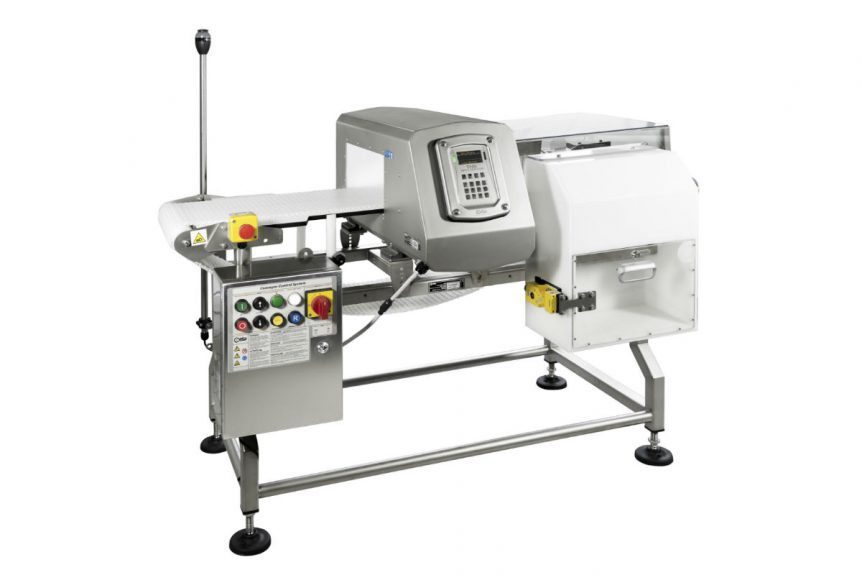The Food Processing industry like any other industrial production process is subject to contamination by foreign objects. Generally they come from the following sources:
- Contamination in raw materials caused by tanks, pipelines and other delivery methods.
- The plant and machinery in the production facility itself either through normal operation or by contamination through maintenance works being conducted in the factory.
- Production staff and others with access to the production area.
- Environmental contamination caused by the water, air and other supplies into the production process.
The correct selection and implementation of metal detection equipment is one of the key elements in identifying and removing ferrous, non-ferrous and stainless steel contaminants from the finished product and ensuring the regulatory compliance of your process and protection of your brand.
Supermarkets are extremely sensitive to anything that might harm their reputation and quite rightly impose stringent “Codes of Practice” on their suppliers to maximise consumer safety and product quality.
Food products comprise a hugely diverse range of raw materials including ready meals, cereals, biscuits, sweets, crisps, powders, crumbs, bottled drinks and wet mixed products to name just a few. Each production line will most likely handle several different versions of a product, except for those with a very high and consistent demand which may then be dedicated to a single item.
These varying demands present contaminant detection equipment with a significant challenge and were the main driving force in the development of CEIA’s Multispectrum Metal Detection Technology.
Every food product has some form of “Product Signal” that represents how the product itself appears to a metal detector. These signals vary tremendously, so that a wet product will have a “big” signal, whereas dry powders exhibit a bulk effect signal, particularly when inspected in large quantities such as 25 kg sacks.
If a product is already packed when it passes the detector, then the packaging will also add to the product’s signal profile, with inert plastic presenting minimal or no signal and metallised film having a large footprint.
A traditional metal detector can be tuned to accurately identify a single product signal and then reject any products that pass through it, that have a different profile and hence are likely to contain a contaminant.
However, if the product changes, either to a different item altogether or due to changes such as a change in moisture levels, or temperature variation, then the detector may start to reject an increasingly large amount of perfectly good product due to “false positives”. A product re-learn, and programming of new settings will require down time on the production line.
The Need For Multispectrum Detectors
Multispectrum detectors overcome this issue because they operate over multiple frequencies at the same time, and are therefore capable of cancelling out a much wider range of product signals. This means no downtime between changes in the product on the line.
In addition their higher sensitivity increases their accuracy for the same product signal, allowing them to detect much smaller contaminants.
For example if a regular detector can identify a 4mm diameter stainless steel contaminant, a multispectrum device will quite often be able to detect a 2 mm diameter piece in the same product. This represents an 800% increase in sensitivity as the volume of a 2 mm diameter item is ⅛ that of a 4mm diameter one.
Many Products, One Detector
The higher sensitivity, and wider range enables a production line to be set-up for many different products without the need for constant stops for reprogramming of the detection parameters. The multispectrum device can cope with the much greater number of product signals that a group of different food products will present to the detector.
Packaging
In general metal detection is performed at the very end of the production line, where the finished item has been packed and nothing else can inadvertently be added to it. Hence packaging is very likely to be scanned alongside the food being produced, adding a further complication to the detection requirements and greater need for a multispectrum device. Aluminium which is regularly used in industry can be particularly difficult for X ray and other devices to see.
Ready meals are a particular example of a pre packaged product that has a wide profile range and hence needs a flexible detector. The CEIA technology meets this need and exceeds the specified detection requirements of both Tesco and Marks & Spencer.
Key selection Issues for the Food Processing Detector
- Sensitivity – the most obvious criteria is sensitivity, what minimum particle size must be detected?
- Product range – how many different products will be on the line?
- Environment – alongside sensitivity you must consider if the operating environment may affect the unit and change the product signal.
- Re-learning the product – how much downtime will be lost in carrying out auto-learns on the product?
- Training – how much operator interaction will there be and hence what are the training requirements?
This list gives an outline of the many elements that must be considered when selecting a suitable device.
CEIA has a long history of supplying food industry metal detectors and as the UK Distributor, MDS’s technical sales team are available to help you in the planning and implementation of your system. Please give us a call.

